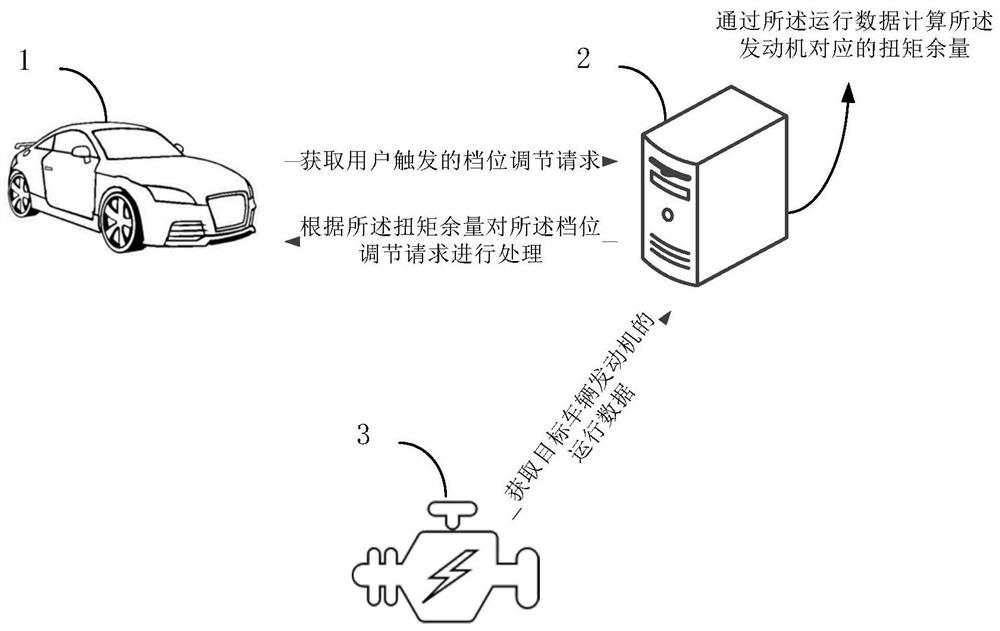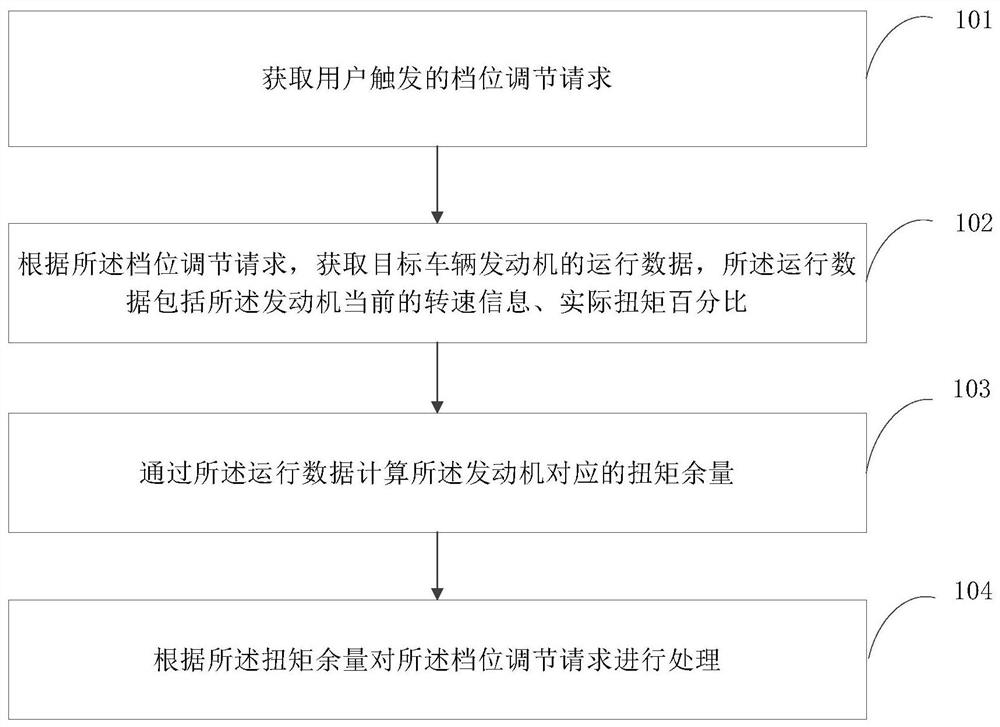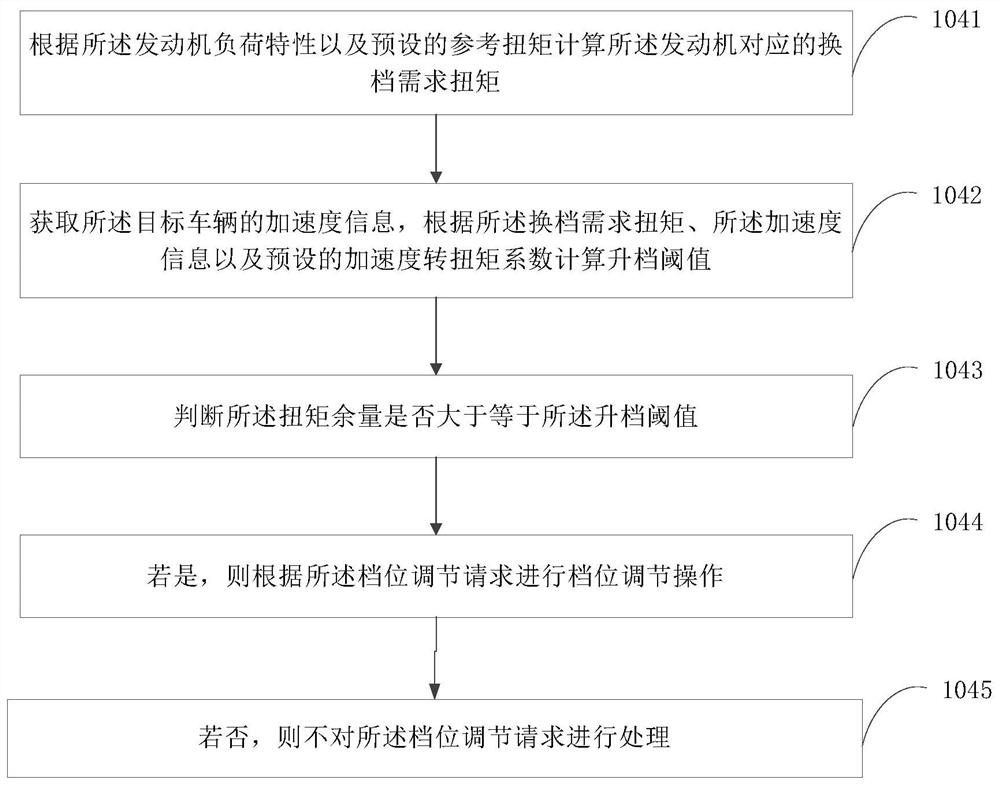Gear processing method, device and equipment and computer readable storage medium
A processing device and processing method technology, which is applied in the direction of mechanical equipment, transmission device control, and components with teeth, etc., can solve problems such as sliding slopes and gearboxes returning to neutral, so as to prolong the service life and avoid the sliding slope of the whole vehicle , to avoid the effect of wear
- Summary
- Abstract
- Description
- Claims
- Application Information
AI Technical Summary
Problems solved by technology
Method used
Image
Examples
Embodiment 1
[0069] figure 2 A schematic flow chart of a gear processing method provided by an embodiment of the present disclosure, as shown in figure 2 As shown, the gear processing method provided by the embodiment of the present disclosure includes:
[0070] Step 101, acquiring a gear adjustment request triggered by a user.
[0071] It should be noted that the execution body of the gear processing method provided in this embodiment is the aforementioned gear processing device, and the gear processing device is installed in the server of the automatic transmission control unit.
[0072] In this embodiment, when the user is driving the target vehicle uphill, the user will trigger a gear adjustment request according to the requirement. Specifically, the gear adjustment request may include stepping on the gas pedal.
[0073] Step 102 , according to the gear adjustment request, acquire the operating data of the engine of the target vehicle, the operating data includes the current rotat...
Embodiment 2
[0108] Figure 4 Schematic diagram of the structure of the gear processing device provided by the embodiment of the present disclosure, such as Figure 4 As shown, the present disclosure also provides a gear processing device, including:
[0109] An acquisition module 201, configured to acquire a gear adjustment request triggered by a user;
[0110] The obtaining module 201 is also used to obtain the operating data of the engine of the target vehicle according to the gear adjustment request, the operating data includes the current rotational speed information and the actual torque percentage of the engine;
[0111] A calculation module 202, configured to calculate the corresponding torque margin of the engine through the operating data;
[0112] A processing module 203, configured to process the gear adjustment request according to the torque margin.
[0113] In an optional embodiment, on the basis of Embodiment 2, the calculation module 202 is specifically used to:
[011...
Embodiment 3
[0130] Figure 5 It is a schematic structural diagram of an electronic device according to an embodiment of the present disclosure, such as Figure 5 As shown, the present disclosure also provides an electronic device 400, including: a memory 401, a processor 402;
[0131] The memory 401 is used to store programs. Specifically, the program may include program code, and the program code includes computer operation instructions. The memory 401 may include a high-speed RAM memory, and may also include a non-volatile memory (non-volatile memory), such as at least one magnetic disk memory.
[0132] The processor 402 is configured to execute the program stored in the memory 401 .
[0133] Wherein, the computer program is stored in the memory 401 and is configured to be executed by the processor 402 to implement the gear processing method provided by any one embodiment of the present disclosure. Relevant descriptions can be understood by referring to the relevant descriptions and...
PUM
 Login to View More
Login to View More Abstract
Description
Claims
Application Information
 Login to View More
Login to View More - R&D
- Intellectual Property
- Life Sciences
- Materials
- Tech Scout
- Unparalleled Data Quality
- Higher Quality Content
- 60% Fewer Hallucinations
Browse by: Latest US Patents, China's latest patents, Technical Efficacy Thesaurus, Application Domain, Technology Topic, Popular Technical Reports.
© 2025 PatSnap. All rights reserved.Legal|Privacy policy|Modern Slavery Act Transparency Statement|Sitemap|About US| Contact US: help@patsnap.com



